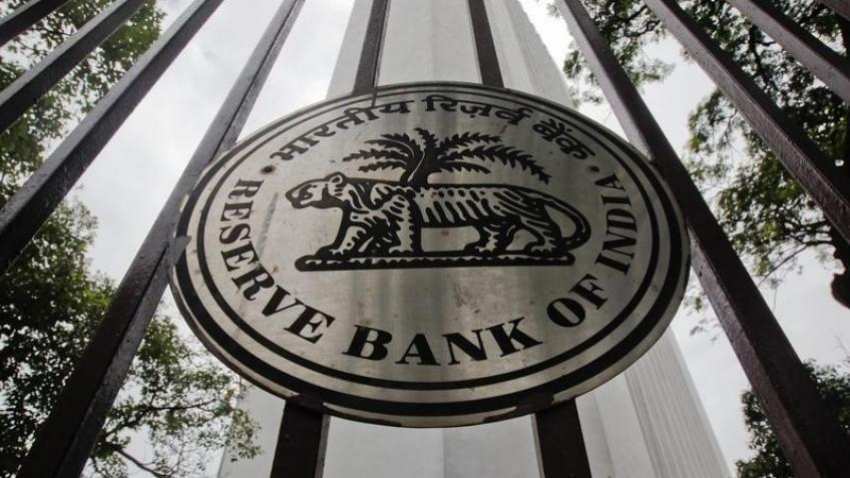Legislate an umbrella law for public credit registry: RBI
With a low credit-to-GDP ratio of a modest 55.7 per cent, the country is still under-penetrated financially and the proposed PCR can help the system move towards more equitable and timely access to credit, especially to the underserved segments, and thus democratise and formalise the credit flow, he said.

Reserve Bank of India (RBI) deputy governor Viral V Acharya called for enacting a special law to enable the proposed public credit registry (PCR) to come into being, and said this can go a long way in resolving the deep data asymmetry in the financial system which in turn can help prevent bad loan pile-up.
With a low credit-to-GDP ratio of a modest 55.7 per cent, the country is still under-penetrated financially and the proposed PCR can help the system move towards more equitable and timely access to credit, especially to the underserved segments, and thus democratise and formalise the credit flow, he said.
According to the Q4 2017 data from the Bank for International Settlements, India's credit-to-GDP ratio stood at a low 55.7 per cent, against China's 208.7 per cent, Britain's 170.5 per cent and the US' 152.2 per cent. Norway lead the chart with 245.6 per cent credit-to-GDP ratio.
He also said those countries which have PCRs or private credit bureaux have been the ratio of private credit to GDP in many countries by 7 to 8 percentage points over a five-year horizon as credit registries and bureaux do not just increase the amount of borrowing but also improve the quality of borrowing.
"It's desirable to have a special comprehensive legislation, overriding the prohibitions contained in all other legislations on sharing of information required for the PCR. Otherwise, all such legislations will have to be amended separately, providing an exemption for sharing of information with PCR," Acharya told the Ficci-IBA-organised national banking conference through a Skype call.
Underlining that almost everywhere PCRs are backed by a specific law, he said a PCR Act can enable us transparently address the entire gamut of governance issues including data acquisition and its dissemination through access rights by various users.
He expressed hope that barring a desired legal backing, the country can move on to implement the PCR as there is a robust Aadhaar data of over one billion people in place and other supporting corporate data like GST Network, and other corporate information like CIN, et al.
According to GST Network, about 0.6 per cent of firms, which account for 38 per cent of total turnover, 87 per cent of exports, and 63 per cent of GST liability, are in what may be called the 'hard core' formal sector in the sense of being both in the tax and social security net, he said, adding the informal economy employs nearly 50 per cent of the nation's workforce.
It can be recalled that the idea of PCR was mooted by Acharya himself last July, following which the RBI appointed a high-level task-force under the chairmanship of YM Deosthalee in October 2017 and the panel submitted the report backing the idea in April.
WATCH THIS ZEE BUSINESS VIDEO
The PCR will be an extensive database of credit information for all credit products, from the point of origination of credit to its termination (repayments, recast, default, resolution etc), eventually covering all lender- borrower accounts without a size threshold.
"The PCR increases the efficiency of lending by reducing information asymmetry using a PCR, the lender can get a 360-degree view of the borrower's other outstanding credits and past performance, allowing better screening at the time of credit origination and superior monitoring during the life of the credit," said Acharya.
Today, information on borrowings from banks, NBFCs, corporate bonds or debentures from the market, external commercial borrowings, foreign currency convertible bonds, Masala bonds, and inter-corporate borrowings are not available in a single data repository, he noted.
"The main objective of the PCR is to fill this lacuna and capture all the relevant information about a borrower, across different borrowing products, in one place. Moreover, significant parts of this registry of borrowing contracts and repayment history will be accessible to all stakeholders provided they too share their data with the PCR," he said.
Acharya argued that had there been better data sharing or their availability of the same, the NPA problem would not have been as bad as it is today, where close to 12 per cent of system-wide assets is dud.
Recalling the difficulties faced by the RBI in identifying the large corporate NPAs, he said, "In spite of the private credit bureaux operating for several years and doing a vital job for retail credit scoring, RBI could not precisely assemble data on the quality of the credit portfolio of banks' large borrowers at an aggregate level."
He said the data is simply not being reported with integrity and full coverage in case of large corporate borrowers. "That is where RBI's Central Repository of Information on Large Credits (CRILC), initiated in 2014, made a huge difference, even if it was somewhat late to be set up," he added.
"The asset quality review that followed in 2015 relied heavily on CRILC data to cleanse the augean stables of massive and unrecognised NPAs. The credit information system, as a whole, has many such gaps which leave much scope for improvement," the deputy governor concluded.
Get Latest Business News, Stock Market Updates and Videos; Check your tax outgo through Income Tax Calculator and save money through our Personal Finance coverage. Check Business Breaking News Live on Zee Business Twitter and Facebook. Subscribe on YouTube.
RECOMMENDED STORIES

Fundamental picks by brokerage: These 3 largecap, 2 midcap stocks can give up to 28% return - Check targets

SBI Senior Citizen Latest FD Rates: What senior citizens can get on Rs 7 lakh, Rs 14 lakh, and Rs 21 lakh investments in Amrit Vrishti, 1-, 3-, and 5-year fixed deposits

Tamil Nadu Weather Alert: Chennai may receive heavy rains; IMD issues yellow & orange alerts in these districts

SIP+SWP: Rs 10,000 monthly SIP for 20 years, Rs 25 lakh lump sum investment, then Rs 2.15 lakh monthly income for 25 years; see expert calculations

Top 7 Mutual Funds With Highest Returns in 10 Years: Rs 10 lakh investment in No 1 scheme has turned into Rs 79,46,160 in 10 years

SIP vs PPF: How much corpus you can build in 15 years by investing Rs 1.5 lakh per year? Understand through calculations

Retirement Planning: Investment Rs 20 lakh, retirement corpus goal Rs 3.40 crore; know how you can achieve it
10:53 AM IST










 Municipal corporations need to enhance own sources of revenue: RBI report
Municipal corporations need to enhance own sources of revenue: RBI report India at forefront of digital revolution, says RBI Dy Guv Patra
India at forefront of digital revolution, says RBI Dy Guv Patra RBI issues framework for reclassification of FPI to FDI
RBI issues framework for reclassification of FPI to FDI RBI unlikely to go for immediate rate cut, despite inflation likely to cool: Ind-Ra
RBI unlikely to go for immediate rate cut, despite inflation likely to cool: Ind-Ra RBI ups domestically-held gold by another 102 metric tonnes in April to September
RBI ups domestically-held gold by another 102 metric tonnes in April to September